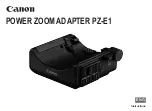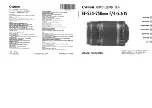
NAR300 system for high temperature
Electrical connection
Hauser
33
6
Electrical connection
Connect the external grounding terminal according to the "Class A grounding" standards (≤
10 Ω) in the shortest implementable distance.
When using Ex [ia] float sensor NAR300 and Ex d [ia] transmitter NRR261, it is necessary
to ground the NRR261 to a built-in safety barrier by following the procedure below (TIIS
specifications only).
• The grounding cable for the safety barrier should be connected independently from
grounding cables that are used for other purposes (lightning arrester), and it must be
connected to a grounding point in accordance with "Class A grounding" standards in non-
hazardous locations.
• Use a conductive grounding cable with a cross-sectional area of at least 2 mm
2
. The
communication cable shied of field devices with Class A grounding in an instrument
room may also be used.
Class A grounding overview
Grounding resistance value 10 Ω
Grounding cable type
Metal cable with a tensile strength of at least 1.04 kN or an annealed copper
cable with a diameter of at least 2.6 mm (0.1 in)
6.1
Procedure for wiring grounding cables
If performing Class A grounding from an Ex [ia] terminal instead of performing Class A
grounding from an Ex d terminal, refer to the figure below.
1
2
3
4
5
6
a
b
c
A
A0039886
21
Example of grounding transmitter NRR261
A
Non-hazardous locations Class A grounding work (TIIS specification only)
a
Power supply
b
Alarm output
c
Ex d line
1
Tank
2
Underground
3
Grounding cable (TIIS specification only)
4
Ex d side terminal
5
Ex [ia] side terminal
6
From float sensor NAR300
















































